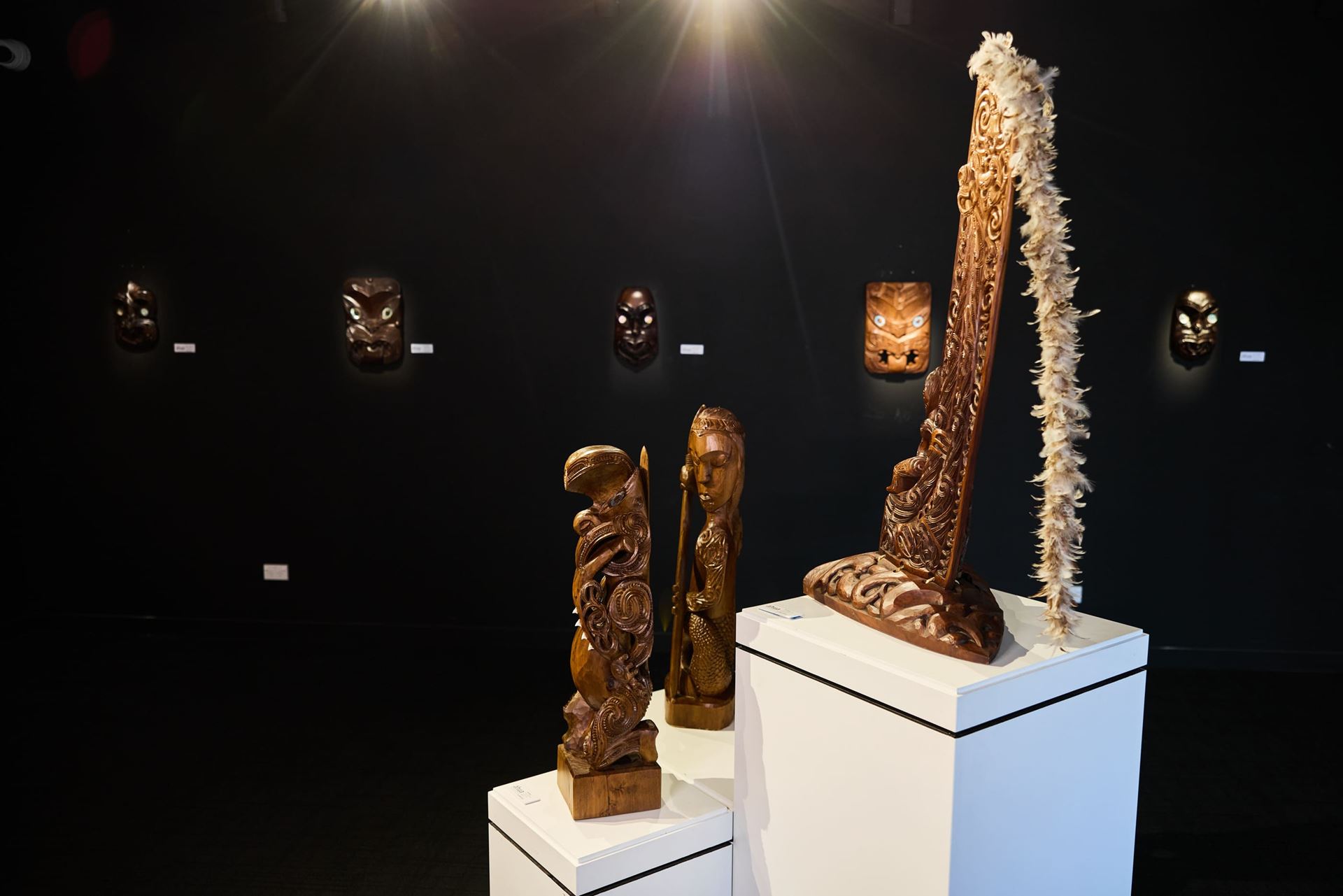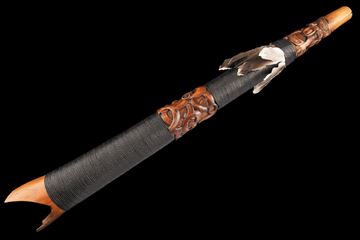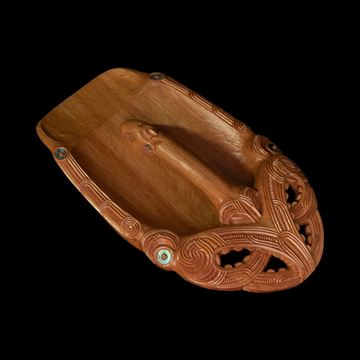
Whakairo Rākau - National Wood Carving School
Since the first intake at Te Wānanga Whakairo, many young Māori from iwi (tribes) throughout New Zealand have been taught the Māori practice of wood carving under the expert guidance of master carvers who were once trainees at the school. This tohu (qualification) is for three years and is 40 hours per week, 47 weeks of the year.
Would you like something custom made just for you? Commission a piece here
Pūkaea - 4798TJ
The pūkaea was the largest of the Māori trumpets, ranging in size from one metre (3.2ft) to over two meters (3.4ft) in length. They were made in two pieces and bound together with the roots of the kiekie (climber). Many pūkaea were carved and they often belonged to the chief of a tribe. They were typically used to call the tribe together.
Material: Matai
Measurements: 600mm x 70mm x 60mm
$5,900.00
Tīheru (Bailer) - 4793GM
Often the bailer (tatā, tīheru or tā wai) was beautifully carved and some were given a name. In canoe traditions, tribal members still name the bailers used on the original voyaging canoes from Polynesia.
Material: Tōtara
Measurements: 180mm x 300mm x 50mm
$9,900.00


